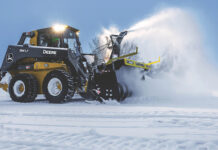Today’s Victory gardens
The landscapes you create and maintain may be lovely for your clients to look at, hang out in, picnic in, and have fun in, but can your clients eat them? Most landscapes today are devoid of any kind of human consumable fruit or vegetable. Not too long ago, our grandmothers and great-grandmothers walked out the kitchen door and picked fresh herbs, vegetables and fruits. Rosalind Creasy, edible landscape expert and author, says that in previous generations the main interest in the landscape was food. “Beauty in a producing plant was a bonus, not a requirement.”
As food prices skyrocket, the economy goes into a downturn, the costs to maintain a lawn escalates, and food freshness and security become a priority, some homeowners are beginning to eye the land surrounding their house in a new way.
“Times are tough,” said Keith Shaljian, co-founder of Bountiful Backyards (www.bountifulbackyards.com) of Durham, N.C., a landscape company that operates as a cooperative venture and focuses on creating edible landscapes for its clients. “Right now, there is a lot of awareness about food [in the landscape], and interest is peaking.”
Homeowners want more than a utilitarian 21st century Victory garden in their back yards; they want it to look just as nice as a nonedible landscape.
One problem is that many homeowners know little about growing their own food, which is where a landscaper who understands or learns about edible landscapes comes in.
“An edible landscape is more than a garden, it is a landscape with beautiful aesthetics that is functional at the same time,” said Shaljian. “It ends up looking more like a traditional landscape than a farm.”
 |  |
 |  |
 | This home in Durham, N.C. is on a 1/8- acre lot and has been transformed by Bountiful Backyards into an edible landscape. The house, which has been cultivated for only three years, has had great results for both edibility and beauty. The yard is planted with figs, Asian persimmon, peaches, blueberries, hazelnuts, goji berries, serviceberries, several varieties of cherries, 500 square feet of annual vegetables, and many native, beneficial and medicinal perennials. |
Edible landscape design
Designing an edible landscape is not much different than planning a traditional landscape, except that edibles are substituted for nonedible plants.
An edible landscape combines trees that produce fruit or nuts with berry bushes, herbs, vegetables, edible flowers and ornamental plants and flowers. The design can take the shape of any garden style and can also include nonedible plants.
There are, however, some special considerations: sunlight is important for most fruits and vegetables (at least six hours of full sunlight per day), and well-drained, well-composted soils are critical.
“There’s no cutting corners here; there’s no getting around the fact that soil and site preparation for an organic edible garden is time-consuming, but essential for getting high-quality results,” said Wendy Talaro, an ecological landscape designer based in Torrance, Calif., who specializes in integrating edibles and California natives.
Talaro recommends double digging to loosen the soil to a depth of 24 inches while incorporating well-aged manure or weed seed-free compost. Garden beds should be about 25 feet long by 4 feet wide. The length may vary, but she recommends staying within the 4 to 5-foot-wide range, since anything wider than 5 feet is hard to reach across from either side for harvesting and weeding purposes.
If you are putting a garden on a site that is occupied by a lawn, it is important to kill off that section of turf first, or it will creep through the landscape. She recommends sheet mulching and using a raised-bed technique.
How an edible landscape will look depends on each individual site. There is a limit to the edibles you can grow if there is little sunlight; shady areas might be limited to medicinal herbs or mushrooms.
“It is very individualized,” said Shaljian. “It all depends on the look they want and how much they want to harvest from the landscape.”
Start small
While clients who request an edible landscape may want to start harvesting the first season, that may not be possible, particularly with perennials like fruit trees that only produce after one or two years. Instead, suggest planting annual vegetables until the trees and berry bushes begin to produce.
However, remember that annual edibles are more labor-intensive than perennial edibles. An edible landscape of annuals can cost more than a traditional landscape composed of ornamentals because you’ll need to constantly replace plants that have been eaten, noted Talaro. An edible landscape of perennials can cost about the same, and sometimes less, than an ornamental landscape, depending on the quality and style of design.
Whatever type of edible landscape will work well on your client’s property, it is important not to overwhelm the client with too many edibles that are hard to maintain. Start small with maybe two apple trees, a few blueberry bushes and a small vegetable garden.
The typical client who requests an edible landscape is often a middle to high-middle income dual-earner couple with one or two children, said Talaro. “More often than not, these particular homeowners have taken a do-it-yourself approach to lawn eradication and garden design,” she said. Her clients so far have been attracted to the idea of creating an edible landscape because they want fresh organic produce, but don’t necessarily have the time, skills or interest to maintain a vegetable garden.
Maintenance
The homeowner must either be committed to weeding and watering the edible landscape or hire help to keep up with this chore. Ideally, an edible garden should be looked after daily; but clients who don’t have the time should have a weekly maintenance plan.
Extra fertilizing will be needed; and, depending on whether there are annuals or perennials, the garden will require replanting every year. Strawberries will need to be refreshed every three years, and fruit trees require regular pruning and sometimes pest control.
“Edible landscapes are not for people who can’t be bothered to attend to the plants’ needs,” said Talaro.
However, the time and energy necessary to plant and maintain an edible landscape is worth it to many homeowners. Depending on the lot size and sun exposure, an edible landscape can grow enough vegetables and fruit to supplement a family of four during the growing season.
“As prices in the grocery store go up, people are realizing the value of growing their own food,” said Shaljian. When you consider that a pint of Argentine blueberries cost $6, one blueberry plant can produce $1,000 to $2,000 worth of berries over its lifetime. Not a bad investment.
Before adding edibles to your business
Landscapers who specialize in edible landscaping must be well-versed in organic methods of landscape maintenance, including sourcing biologically or naturally derived soil amendments and minimizing, if not curtailing altogether, the use of pesticides. It also means learning orchard culture and skillful tree training and pruning, and the cultural needs of dozens to hundreds of edibles. “This is not a green veneer that can be layered over a company’s profile … you can’t just adopt edible landscaping because it’s trendy,” said Talaro.
The easiest way into the market, suggested Talaro, is to appeal to consumers who want a little plot of edibles or herbs integrated with their already-established ornamental landscaping.
“Master the use of one subset of edibles, such as annual vegetables or herbs,” said Talaro. After that, you can add on more edibles like fruit trees and berries.
| ||||
The author is a freelance writer from Keene, N.H.


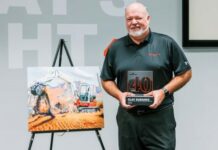










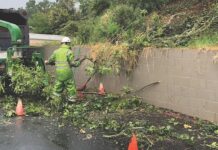
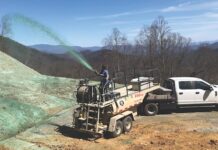

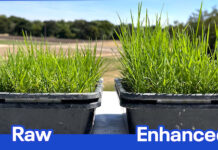



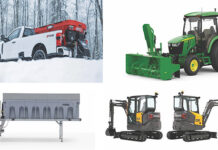
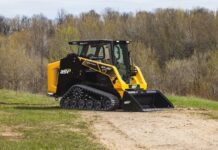

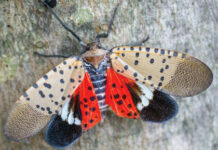
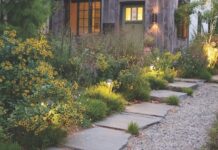


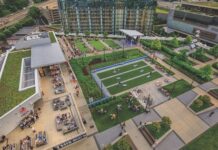

![[VIDEO] Dickies®: Discover Workwear That’s Anything But Uniform](https://turfmagazine.kinsta.cloud/wp-content/uploads/2023/06/1647663814-4b1a2a7742790a9b1e97a3b963477850192e1d6a9dfba9b07214a77bae25d6e3-d-324x160.jpg)


